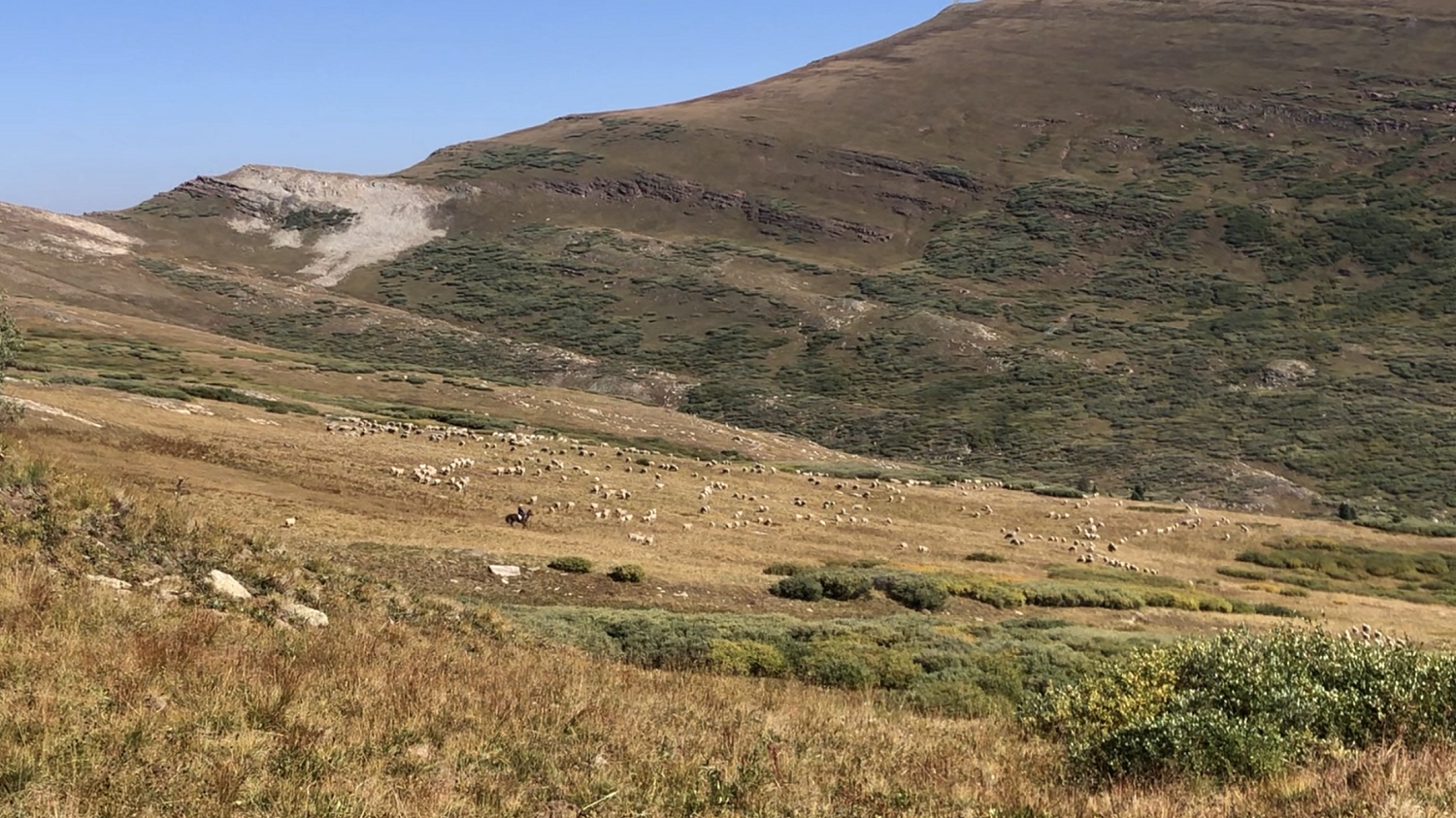Colorado Trail Segment 8: The Sheep
As Labor Day Weekend approached, my plan to hike another CT section loomed on my calendar. I struggled to muster the enthusiasm for yet another weekend backpacking trip. After all, with less than half the trail sections complete and the rest winding ever farther from Denver, section hiking the entire CT has started to feel a bit like a fool’s errand. (Hopefully you sense the ‘but’ coming.) BUT I’m so glad I went through with this trip.
The Stats
Segment: 8
Endpoints: Copper Mountain to Tennessee Pass
Miles: 25
Type: overnight trip
The Journey
My friend Taylor and I began by leaving cars at Tennessee Pass and Copper Mountain. Parking at Copper was a bit of a hassle, with three different people telling us we could or could not park in various lots. Once we got an official overnight permit however, we were ready to hike.
Segment 8 begins by cutting across Copper’s ski slopes, rolling under chair lifts, in the woods, and across open runs. After leaving the resort, the trail turns south and up into the Guller Creek valley. We reached camp right at sunset and went straight to bed.
The next morning, we packed up and continued up the valley. Although we’d thought we were totally alone the previous night, we hiked only a minute before crossing a few different campsites occupied by still sound asleep hikers. In less than 3 miles of climbing, we reached treeline and the first indication of spectacular views ahead. We marveled at Janet’s Cabin, a member of the 10th Mountain Division huts, used by cross-country skiers in the winter. Soon after, we crossed Searle Pass.
The miles between Searle and Kokomo Pass were S T U N N I N G. This area reminded me why I’m hiking the Colorado Trail in the first place. The combination of the high elevation, expansive views, early fall yellows and reds, isolation, and perfect, cloudless sky had Taylor and I sputtering about the trail’s beauty. We were delighted to spy marmots, pikas, horses, and a rancher on horseback herding an enormous flock of sheep – while having the trail completely to ourselves.
After crossing Kokomo Pass, we descended the sometimes steep trail down to the Eagle River, near the Camp Hale bunkers. The trail was more populated on this side of the pass. We began to toy with the idea of pushing all the way to Tennessee Pass that day. We had planned to camp at the Eagle River, a 12-mile day, leaving us with another 6 the next day. But we both felt stronger than expected and spending the night in a bed rather than a tent was enticing.
We broke up the 6 remaining miles by stopping for water a couple times. From the Eagle River to Tennessee Pass, the trail winds gradually up as it follows Hwy 24. We enjoyed a flat walk in the Mitchell Creek valley before the final incline to Tennessee Pass. Exhausted after our 19-mile day (an all-time record for each of us!) we cooked mashed potatoes in the parking lot, before summoning the energy to drive home.
The Gear
I carried all the same gear that I used on the Tahoe Rim Trail this summer (read about that here and here), except for the tent:
Taylor’s Big Agnes Tiger Wall: Taylor had just purchased a new Tiger Wall and brought it along for the first time. Alex and I looked at a Tiger Wall, but didn’t think it provided enough of a space gain over our Nemo Hornet. But I was pretty impressed with the space using it with Taylor. Maybe Taylor is just way smaller than Alex? Either way, we had plenty of room for the two of us.
This website contains affiliate links, which means The Trek may receive a percentage of any product or service you purchase using the links in the articles or advertisements. The buyer pays the same price as they would otherwise, and your purchase helps to support The Trek's ongoing goal to serve you quality backpacking advice and information. Thanks for your support!
To learn more, please visit the About This Site page.









